Our mission | Our story | The history of the MU FRTI logo | Past directors

The University of Missouri Fire and Rescue Training Institute would be remiss if it did not mention the most famous fire in the history of the University. The fire on Jan. 9, 1892, burned down the entire building, leaving only the columns as an icon. While the MU Fire and Rescue Training Institute was decades from being conceived, this incident most certainly weighed heavily in people’s memories. It more than likely inspired many to help strive to achieve adequate fire protection and rescue training for both the University and the public. Without this tragic event, MU FRTI may have never formed.
Our mission
The mission of the University of Missouri Extension’s Fire and Rescue Training Institute is to plan, develop, deliver and administer state-of-the-art continuing professional education courses which meet the comprehensive training needs of fire and rescue personnel and other emergency managers and responders utilizing the most efficient and effective means possible, thereby enabling them to better protect lives and property within their communities.
Our story
Although fire service training has always been a part of every organized fire department, the early years in Missouri saw few training opportunities outside one’s own department. In 1933, central Missouri fire departments joined with the University of Missouri to address the need for more advanced training. Through their efforts the first Missouri Central Fire School was conducted that year. The purpose of this first school was to provide training that was needed for firefighters to perform their duties safely and efficiently. Some of the training topics of that first school included Ventilation and Gas-Masks and First Aid and Resuscitation. Even in the thirties, fire training addressed health and safety issues for firefighters, as well as providing medical services for citizens. The Missouri Central Fire School was a great success and became an annual event. The name of the school changed to the Summer Fire College, and then to the name it bears today Summer Fire School. From these modest beginnings the University of Missouri took a lead role in the training of Missouri’s fire and emergency service responders. This training mission has continued for over three quarters of a century.
 Statewide fire training in Missouri remained fairly rudimentary throughout the thirties and early forties. Summer Fire College, supported by the University, remained the single main initiative. In 1941, the State Department of Vocational Education established one fire instructor position to conduct training in the state. The instructor that was appointed to fill the position was W. Bush Walden. The Missouri Inspection and Rating Bureau, an insurance industry group, took over responsibility for fire training in 1944, and Instructor Walden (pictured right) transferred with the program. The University continued to play a role during this transition as both state entities partnered with the University to continue to offer the annual Summer Fire School. Three years later, state fire training found a permanent full time home with the University of Missouri when the Missouri Inspection and Rating Bureau turned over all programming to the University. A full time fire service training program was created within the University of Missouri as part of the Division of Adult Education and Extension Services. The new program was named the “Firemanship Training” program. Instructor Walden continued his position as the fire service instructor with the new program. Walden retired from the program in 1973, with the title of Coordinator of Fire Training. Over the years the program continued to expand and offer new courses. In 1976, the name officially changed to the Missouri Fire and Rescue Training Program to better reflect its expanded training mission.
Statewide fire training in Missouri remained fairly rudimentary throughout the thirties and early forties. Summer Fire College, supported by the University, remained the single main initiative. In 1941, the State Department of Vocational Education established one fire instructor position to conduct training in the state. The instructor that was appointed to fill the position was W. Bush Walden. The Missouri Inspection and Rating Bureau, an insurance industry group, took over responsibility for fire training in 1944, and Instructor Walden (pictured right) transferred with the program. The University continued to play a role during this transition as both state entities partnered with the University to continue to offer the annual Summer Fire School. Three years later, state fire training found a permanent full time home with the University of Missouri when the Missouri Inspection and Rating Bureau turned over all programming to the University. A full time fire service training program was created within the University of Missouri as part of the Division of Adult Education and Extension Services. The new program was named the “Firemanship Training” program. Instructor Walden continued his position as the fire service instructor with the new program. Walden retired from the program in 1973, with the title of Coordinator of Fire Training. Over the years the program continued to expand and offer new courses. In 1976, the name officially changed to the Missouri Fire and Rescue Training Program to better reflect its expanded training mission.
Through the dedicated work of key leaders in the state’s fire service along with the support of Missouri’s fire service, the University of Missouri provided additional resources to expand the program. With this expansion, the University granted full Institute accreditation to the program on July 1, 1982, and formally changed the name to the Missouri Fire and Rescue Training Institute (University Archives, University of Missouri-Columbia, Record Group: 16 C Sub - Group: 11). In compliance with changes on the University of Missouri Columbia campus, the Institute’s name was officially changed in 1991 to the University of Missouri Fire and Rescue Training Institute, the name it retains today.
Throughout its existence the fire training program/institute has been a unit within a number of different academic colleges or divisions of the University, as well as occupied a variety of home locations on the University’s Columbia campus. During the seventies and eighties, Fire and Rescue Training was a part of the College of Public and Community Services. Though the program was tied with the Division of Extension starting in 1982, it did not fully transfer into Extension until 1988, when the College of Public and Community Services was disbanded. Fire and Rescue Training occupied its most prominent location on campus during the sixties when the University built a combination office and classroom building that was designed like a fire station with actual apparatus bays to house the program’s fire trucks and equipment. The building was located on Ashland Gravel Road just South of the main campus and associated with part of the agricultural farm. In 1966, the growing need for another City of Columbia fire station to better protect the growing campus of the University compelled the University’s Board of Curators to enter into an agreement with the Columbia City Council to lease part of the Institute’s space to the city to house an engine company. Initially, Fire and Rescue Training shared space with the engine company. However, the need for apparatus and crew space continued to increase which displaced the Institute. The original building went through a number of remodels and is now Columbia Fire Department’s Station #3. In 1998, the MU Fire and Rescue Training Institute relocated to the Heinkel Building and then moved to South College Avenue in 2013. Its current location has been at 2800 Maguire Boulevard since 2021.
In addition to coordinating and delivering the Institute’s training programs, MU FRTI works in concert with the National Fire Academy (NFA) and the U.S. Fire Administration (USFA) to provide NFA programming at the state level. As the local face of the National Fire Academy, MU FRTI maintains the same quality of instruction and high standards established by the National Fire Academy. As the state Enfranchised Program for the NFA, the Institute teaches NFA hand-off courses, as well as teaching curriculum developed by MU FRTI that carries NFA credit endorsements.
In late 2000, MU FRTI expanded its mission beyond traditional firefighting education and added programming in the areas of counter-terrorism and emergency management. These programs have expanded beyond their original scope and today, provide specialized response and emergency management training to local responders, military personnel, state and local governments, and private entities. In January 2004, emergency management training was further expanded by the addition of the Exercise and Evaluation Program. This program assists local and state governments, volunteer organizations, and businesses develop operational exercises to test their emergency plans and procedures.
In 2001, MU FRTI proudly partnered with Columbia College to create an Associate in Science (AS) in Fire Service Administration (FSAD) degree program. This program provides firefighters the opportunity to directly transcript and transfer applicable Institute courses for college credit towards this degree. As part of this partnership, MU FRTI maintains American Council on Education (ACE) college credit recommendations for selected fire service courses.
The ACE College Credit Recommendation Service (CREDIT) connects workplace learning with colleges and universities by helping adults gain access to academic credit for formal courses and examinations taken outside traditional degree programs. MU FRTI has meticulously groomed courses specific to this degree to meet the high standards of the ACE organization. MU FRTI has participated in the ACE review process since 2001 and continues to support the process so that the Institute’s students have the value added ability to transfer course work for college level credit.
MU FRTI works closely with the Missouri Division of Fire Safety (DFS) and the Missouri Fire Education and Advisory Commission to ensure that MU FRTI courses, where applicable, address state fire service certification requirements. The Institute also works with other state and federal entities regarding approvals and acceptance of training courses delivered by the program.
MU FRTI is listed as the sixth oldest state level fire training program in the United States. The Institute’s mission continues to be focused on providing effective, standards-based, quality training and education for our state and nation’s emergency responders. Examples of the comprehensive areas of emergency response training include: structural, wildland, and aircraft firefighting; emergency medical care; technical rescue; environmental emergency mitigation; fire service instructor and company officer development; counter-terrorism; emergency management; and emergency planning and exercise evaluation.
Following the Land Grant University model for Extension outreach, MU FRTI is the state’s “classroom” and technical skills training program for Missouri’s fire and emergency service responders by delivering programming across the state to local communities, as well as through annual and regional fire schools. MU FRTI maintains a fleet of trailers that transport training props and/or support equipment and annually travels over a quarter of a million miles each year providing training to all 114 Missouri counties and surrounding states. Enabled by this training, Missouri’s emergency responders have made a significant impact on the protection of lives and property from fire and other disasters. In 2010, MU FRTI ranked tenth in the nation in number of fire and emergency responders trained per year. Annually the Institute delivers training to over 15,000 students and generates over 250,000 student instructional hours. Every hour of instruction received and every emergency first responder trained translates directly into safer firefighters and safer communities.
The history of the MU FRTI logo
Since the inception of the “Firemanship Training” program in 1947, the program has utilized traditional fire service insignia in an emblem designed to identify and symbolize the program. The first emblem was circular with “University of Missouri • Firemanship Education” around the edge and traditional fire service symbols incorporated in the center. With the granting of Institute status by the University in 1982, the Institute incorporated a new emblem utilizing the traditional, internationally-recognized fire service Maltese Cross with the wording Missouri Fire and Rescue Training Institute. By a 1991 directive from the Chancellor’s Office, the stacked “MU” logo was placed in the center of Institute’s Maltese Cross emblem which established the official Institute title of the MU Fire and Rescue Training Institute (MU FRTI). In 2001, MU FRTI’s emblem was engraved in granite, along with the other major fire service organization and agencies, as part of the Missouri State Fire Fighters Memorial in Kingdom City, MO. MU FRTI’s emblem stands in tribute to Missouri’s firefighters who have fallen in the Line of Duty, as well as those who continue to serve.
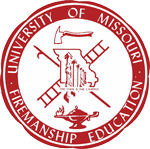
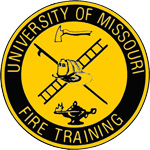
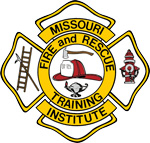
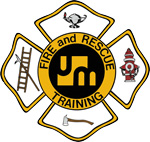
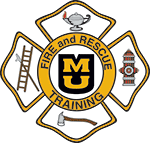
Past directors
Kevin Zumwalt (2018–2020)
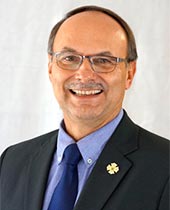 Director, MU Fire and Rescue Training Institute
Director, MU Fire and Rescue Training Institute
Kevin Zumwalt began his fire service career as a volunteer with the St. Clair Fire Protection District in 1975. In 1984 he became a part-time field instructor for the Fire and Rescue Training Institute and in 1986 was asked to coordinate the Winter and Summer Fire Schools. He served for five years as a career firefighter with the Mehlville Fire Protection District in St. Louis County before taking a full-time position with MU FRTI in 1994. During his time with the Institute, he developed a learning management system to efficiently handle course management, student registration, and student transcripts. He also coordinated the development of a growing technical rescue program that gained a reputation as one of the most successful in the country. He was recognized nationally as an early adopter in the use of the Incident Command System for conference management. Over the years, Zumwalt played a key role in incorporating new methods of instruction into the FRTI curriculum, from early satellite delivery to webcasting and online learning.
David E. Hedrick (2007–2017)
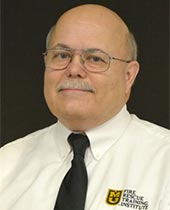 Director, MU Fire and Rescue Training Institute
Director, MU Fire and Rescue Training Institute
David E. Hedrick received his Bachelor’s degree from the University of Tennessee, and a Certified Public Manager degree from Louisiana State University’s Governmental Services Institute. He received professional designations from the Commission on Professional Credentialing as both a Chief Fire Officer in 2003 and Chief Training Officer in 2012. He has been involved in fire and emergency services since 1977, beginning his career as a Firefighter/EMT, and has served as a volunteer fire chief. He is the former Director of Fire Service Training with the Tennessee Fire & Codes Academy, and a former Assistant Director at the LSU Fireman Training Program. Hedrick served as the Vice President of the North American Fire Training Directors (NAFTD) from 2009 to 2013.
Gary Wilson (2002–2006)
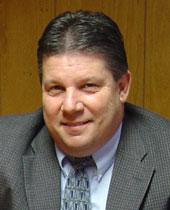 Director, MU Fire and Rescue Training Institute
Director, MU Fire and Rescue Training Institute
Wilson’s fire service experience began in 1977 and at this time has included work as both a career professional and volunteer firefighter. He has an associate degree with emphasis in fire prevention, a bachelor’s degree in management and human relations and is a Missouri fire service instructor level IV. He also brings eight years of experience from the Fire Service Training program at the University of Kansas. First, Wilson will go on to lead MU FRTI on an interim basis for two years after previously serving as associate director for five years, overseeing the institute’s day-to-day operations as well as curriculum development. He will then be appointed as director.
Bruce R. Piringer (1986–2002)
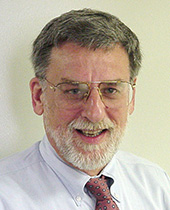 Director, MU Fire and Rescue Training Institute
Director, MU Fire and Rescue Training Institute
Bruce R. Piringer provides his expertise and experience to his new position at the MU Fire and Rescue Training Institute. Having previously spent five years as a Fire Service Management Specialist with the National Fire Academy at the Federal Emergency Management Agency, he is well suited for the task of director. He will continue with the program until 2002 when he retires, but remains active with the program as an adjunct instructor lending his advice and knowledge.
Paul Adams (1984–1986)
 Director, Missouri Fire and Rescue Training Institute
Director, Missouri Fire and Rescue Training Institute
Unfortunately some of our history has been lost over the years. We are currently working on updating this section.
A. William (Bill) Westhoff Jr. (1973–1982)
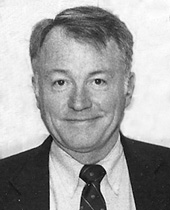 Coordinator of Fire Training/Director, Firemanship Training Program/Missouri Fire and Rescue Training Institute
Coordinator of Fire Training/Director, Firemanship Training Program/Missouri Fire and Rescue Training Institute
Having graduated from Oklahoma State University with a degree in Fire Protection along with a Bachelors and Masters Degree in Industrial Education, A. William (Bill) Westhoff Jr. brings a vast amount of knowledge with him to the fire training program. Along with his degree he brought the experience from being the first Fire Chief for the Boone County Fire Protection District. Previously he had also acquired nearly ten years of experience within the University of Missouri program as an instructor before being appointed as the coordinator and finally with a title change is named as the director.
W. Bush Walden (1957–1973)
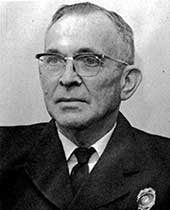 Coordinator of Fire Training, Firemanship Training Program
Coordinator of Fire Training, Firemanship Training Program
After many years with the Firemanship Training program at the University of Missouri. W. Bush Walden is appointed as the Coordinator of Fire Training. Individual classes as well as regional schools and the continuation of the annual state fire school in Columbia headed the list of the many objectives for Walden and the program.
Joe Fetters (1949–1957)/h4>
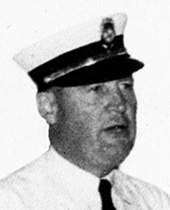 Administrator, Firemanship Training Program
Administrator, Firemanship Training Program
Having previously worked for the Nebraska State Department of Vocational Education as well as the Illinois Fire College, Joe Fetters joined the Missouri fire training program. He previously worked for a number of years as a Firemanship Instructor Assistant within the program at the University of Missouri. He also continued to work in conjunction with the program in Illinois, sharing techniques and training ideas. He would eventually go back to Illinois and is currently listed as being the Director Emeritus of the University of Illinois Fire College.
W. Bush Walden (1941–1949)
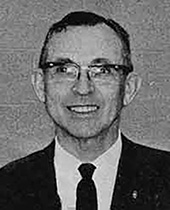 Field Training Instructor, Firemanship Training Program
Field Training Instructor, Firemanship Training Program
After spending many years with the City of Columbia Fire Department, Captain W. Bush Walden is appointed by the State Department of Vocational Education to lead and conduct training throughout the state. His teaching credentials and capabilities became well known and he laid the groundwork for training the fire service in Missouri.
Missouri Fire College (1933–1946)
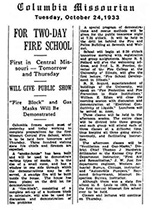 The annual Missouri Fire College was operated as a part-time program in partnership between the fire service of mid-Missouri and under the Division of Adult Education and Guided Intensive Studies at the University of Missouri.
The annual Missouri Fire College was operated as a part-time program in partnership between the fire service of mid-Missouri and under the Division of Adult Education and Guided Intensive Studies at the University of Missouri.
